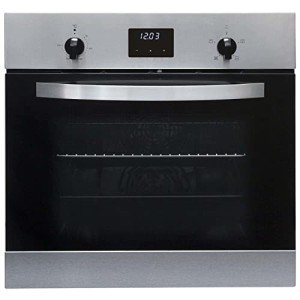Understanding Electric Ovens and Hobs: Your Guide to Cooking Efficiency
Electric ovens and hobs have actually changed the culinary landscape, offering home cooks and expert chefs a dependable, effective, and constant way to prepare meals. As technological improvements continue to influence appliance design, the efficiency and functionality of electric cooking systems have actually significantly enhanced. This article looks into the features, advantages, and factors to consider surrounding electric ovens and hobs, offering a thorough summary for anybody looking to update or purchase kitchen devices.
What Are Electric Ovens and Hobs?
Electric ovens are kitchen appliances developed for baking, broiling, roasting, and other cooking methods that require controlled heat. They make use of electric coils or radiant heat aspects to create and maintain the desired temperature. Electric hobs, often referred to as electric cooktops, are flat surfaces with heating aspects that enable pots and pans to be positioned straight on them for cooking.
Table 1: Key Differences Between Electric Ovens and Hobs
| Feature | Electric Oven | Electric Hob |
|---|---|---|
| Primary Function | Baking, roasting, broiling | Heating pots and pans for cooking |
| Heating Method | Electric coils or radiant elements | Induction, glowing, or ceramic components |
| Operation Temperature Range | Approximately 500 ° F (260 ° C | ) Varies by design; generally lower than ovens |
| Cooking Styles | Versatile; ideal for numerous meals | Mostly stovetop cooking approaches |
| Space Requirement | Normally built into cabinets | Often standalone or integrated choices |
| Energy Consumption | Usually greater, depending upon usage | More energy-efficient with induction hobs |
Advantages of Electric Ovens and Hobs
When thinking about electric ovens and hobs, it's vital to understand their many advantages, which can enhance the cooking experience.
1. Consistent Heating
Electric ovens and hobs supply even and consistent heating, which is vital for numerous cooking techniques. This guarantees that meals cook evenly, minimizing the chances of overcooking or undercooking particular areas of food.
2. Safety Features
Modern electric ovens and hobs come geared up with various safety features to prevent mishaps in the kitchen. For example, many models include automatic shut-off functions, hot surface indications, and kid security locks.
3. Easy to Use
Unlike gas designs, electric ovens and hobs are straightforward and user-friendly. click the following internet page of switching on a dial or pressing a button makes them available for cooks of all ability levels.
4. Versatile Cooking Options
With numerous cooking approaches possible, from baking to simmering, electric designs are versatile sufficient to accommodate a wide variety of culinary styles and choices.
5. Cleaning and Maintenance
Electric ovens generally include smooth surface areas that are easy to tidy, particularly models with self-cleaning capabilities. Hobs, particularly induction types, likewise offer a flat surface area that is simple to wipe down, making upkeep a breeze.
Popular Types of Electric Ovens:
- Conventional Ovens: Ideal for traditional baking and roasting.
- Convection Ovens: Circulate hot air for faster, even cooking.
- Microwave Ovens: Use electromagnetic radiation for fast heating and cooking.
- Toaster Ovens: Small counter top ovens for quick jobs.
Popular Types of Electric Hobs:
- Induction Hobs: Utilize electromagnetic fields for quick heating and energy effectiveness.
- Glowing Hobs: Feature electric coils that heat up to cook food.
- Ceramic Hobs: Offer a smooth surface area and are simple to clean.
Factors To Consider When Choosing Electric Ovens and Hobs
While electric ovens and hobs provide many benefits, several factors must be taken into consideration to make sure the best suitable for your kitchen:
1. Space Availability
Assess the offered kitchen space before purchasing. Identify whether you require a built-in model or a freestanding home appliance, and determine the measurements carefully to guarantee a great fit.
2. Cooking Needs
Determine your cooking routines and preferences. If you frequently bake big quantities or cook complex meals, consider an oven with innovative functions like convection settings or multiple racks.
3. Energy Efficiency
Try to find energy-efficient models that can help conserve on energy costs in time. Energy Star-rated devices can be particularly economical.
4. Spending plan
Set a realistic budget that accounts for both the preliminary purchase and continuous operating expenses. In addition to the home appliance expense, consider setup and prospective repairs.
5. Additional Features
Consider whether features like wise technology, programmable settings, or steam cooking options are very important for your cooking style.
Frequently asked question Section
Q: How do I tidy my electric oven?
A: Most electric ovens come with self-cleaning choices. If your model does not have this feature, enable the oven to cool, then clean down surfaces with a mix of baking soda and water or a commercial oven cleaner.
Q: Is induction cooking safe?
A: Yes, induction cooking is thought about safe as the heating component only triggers when suitable pots and pans is in contact with it, reducing the risk of burns.
Q: How long does it take for an electric oven to pre-heat?
A: Preheating times differ based upon the oven's model and temperature setting however normally range from 10 to 15 minutes.
Q: Can I utilize any cookware on an induction hob?
A: No, only ferromagnetic cookware works with induction hobs. Examine for induction compatibility before use to prevent damage.
Q: What is the difference in between a convection oven and a traditional electric oven?
A: A stove consists of a fan that distributes hot air, guaranteeing even cooking and decreased cooking times compared to a standard electric oven, which does not have this function.
Electric ovens and hobs offer a modern-day solution to different cooking needs, providing performance and dependability in the kitchen. As customers assess their options, comprehending the functions, types, and factors to consider will enable them to make informed choices. Whether one is a periodic cook or a culinary lover, electric devices can improve the overall cooking experience, bringing convenience and imagination to the table.

